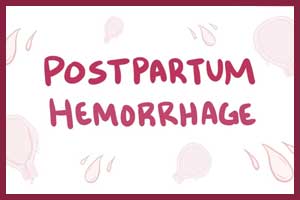- Home
- Editorial
- News
- Practice Guidelines
- Anesthesiology Guidelines
- Cancer Guidelines
- Cardiac Sciences Guidelines
- Critical Care Guidelines
- Dentistry Guidelines
- Dermatology Guidelines
- Diabetes and Endo Guidelines
- Diagnostics Guidelines
- ENT Guidelines
- Featured Practice Guidelines
- Gastroenterology Guidelines
- Geriatrics Guidelines
- Medicine Guidelines
- Nephrology Guidelines
- Neurosciences Guidelines
- Obs and Gynae Guidelines
- Ophthalmology Guidelines
- Orthopaedics Guidelines
- Paediatrics Guidelines
- Psychiatry Guidelines
- Pulmonology Guidelines
- Radiology Guidelines
- Surgery Guidelines
- Urology Guidelines
Oxytocin by I/V route more effective in prevention of postpartum hemorrhage

The administration of intravenous oxytocin for the third labor stage results in less frequent blood transfusion, severe postpartum hemorrhage (PPH), admission to a high dependency unit as compared to intramuscular oxytocin, and fewer side effects.
Findings of the study, published in The BMJ "should inform decision making when advising women on management options for the third stage of labor," write the authors.
Nita Adnan, clinical lecturer, Trinity College, University of Dublin & Coombe Women & Infants University Hospital, Dublin, Ireland, and colleagues conducted the study to determine whether intravenous oxytocin is more effective than intramuscular oxytocin at preventing postpartum hemorrhage at vaginal delivery.
For this double-blind placebo-controlled randomized trial women were allocated to an intravenous bolus of oxytocin (10 IU in 1 mL given slowly over one minute) and placebo intramuscular injection (1 mL 0.9% saline) or an intramuscular bolus of oxytocin (10 IU in 1 mL) and placebo intravenous injection (1 mL 0.9% saline given slowly over one minute) at vaginal delivery.
The participants included 1075 women aged 18 years or older, at term with a singleton pregnancy who were aiming for a vaginal delivery with an actively managed third stage of labor.
The primary outcome was postpartum hemorrhage (PPH, measured blood loss ≥500 mL). Secondary outcomes were severe PPH (measured blood loss ≥1000 mL), need for blood transfusion, admission to a high dependency unit, and side effects to oxytocin.
Also Read: ACOG Expands Recommendations to Treat Postpartum Hemorrhage
Key Findings:
- The incidence of PPH was not significantly lower in the intravenous group (18.8%, 97/517) compared with an intramuscular group (23.2%, 120/518).
- The incidence of severe PPH, however, was significantly lower in the intravenous group (4.6%, 24/517) compared with intramuscular group (8.1%, 42/518): 0.54 (0.32 to 0.91) as was the need for blood transfusion (1.5% v 4.4%, 0.31, 0.13 to 0.70) and admission to a high dependency unit (1.7% v 3.7%, 0.44, 0.20 to 0.98).
- The number needed to treat to prevent one case of severe PPH was 29 (95% confidence interval 16 to 201) and to prevent one case of blood transfusion was 35 (20 to 121).
- The incidence of side effects to oxytocin was not increased in the intravenous group compared with an intramuscular group (4.1% v 5.2%, 0.75, 0.42 to 1.35).
"PPH is common, even in women apparently at low risk. Our findings support the use of intravenous oxytocin rather than intramuscular oxytocin in terms of preventing severe PPH and the need for blood transfusion, with the potential to prevent mortality if implemented globally in developing world settings," concluded the authors.

Disclaimer: This site is primarily intended for healthcare professionals. Any content/information on this website does not replace the advice of medical and/or health professionals and should not be construed as medical/diagnostic advice/endorsement or prescription. Use of this site is subject to our terms of use, privacy policy, advertisement policy. © 2020 Minerva Medical Treatment Pvt Ltd